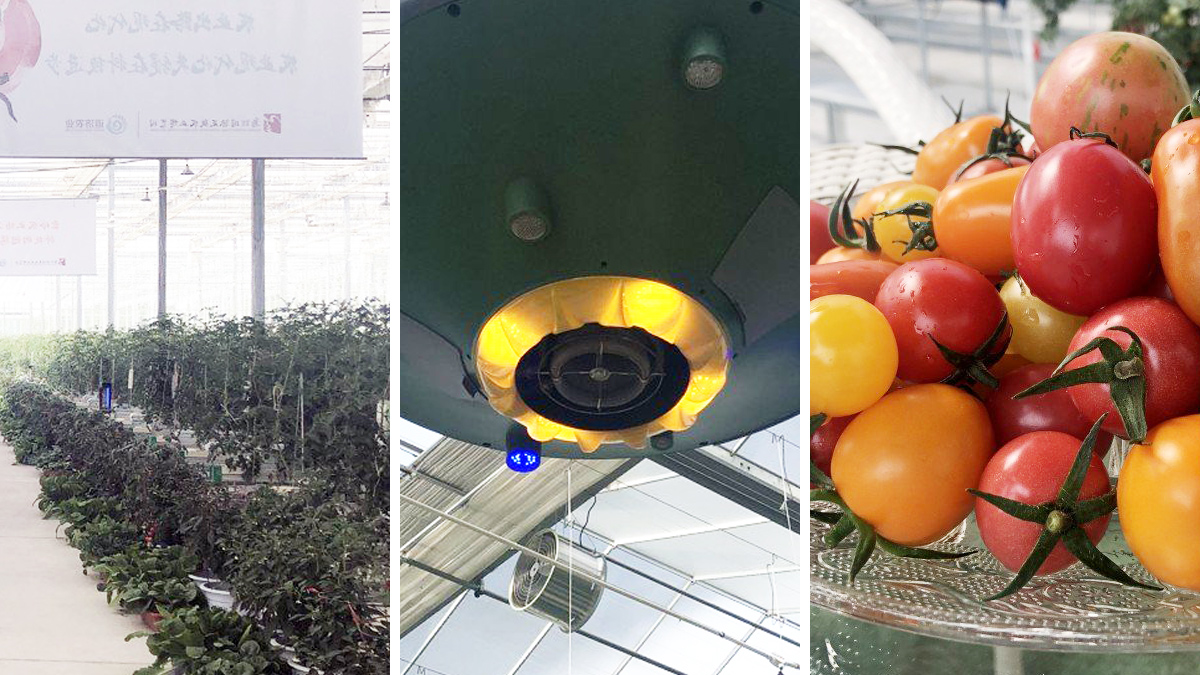China turns to 5G 'smart farms' to boost tomato crops
As one of the world’s emerging tomato producers, China is turning to technology to boost production.

Agritech is revolutionising the world of food production, and growers around the planet are examining how they can improve areas such as efficiency, yield, distribution, and production using 5G technology.
This is especially true in China, which is currently investing heavily in a number of 5G use cases. And according to The South China Morning Post, the country’s tomato industry is turning to technology, via a newly-opened smart greenhouse at the Wuzhen International Internet Agriculture Expo Park.
5G greenhouse
“5G networks are faster and more accurate – with 4G, the system froze frequently and we needed to wait for the analysis. 5G gives us the result immediately.”
Zhao Yu, Daoji Agriculture.
The greenhouse, which includes 2,800 plants, across 18 varieties, uses 5G to control and modify areas such as temperature, humidity, plant feeding, and - according to reports - even the music that gets played in the facility.
“We are all exploring 5G applications at the present time as there is not much 5G equipment available yet,” Zhao Yu, who runs the smart farm programme at Daoji Agriculture, told the Post. “5G networks are faster and more accurate – with 4G, the system froze frequently and we needed to wait for the analysis. 5G gives us the result immediately.”
The trial has been made possible thanks to sensors linked to a 5G network, which is operated by China Mobile, one of China’s largest telecommunication companies.
Other players
Other players are also exploring the possibilities offered by smart farms. And in September Huawei and Swiss telecoms provider Sunrise partnered with agricultural research institute Agroscope to develop a 5G smart farm.
“The Swiss Future Farm will make smart farming tangible in the field and in the stable, and serve as a unique platform in Europe when it comes to new technologies in agriculture and in the food industry,” says Nadja El Benni, Head of Competitiveness and System Evaluation of Agroscope. “At the Swiss Future Farm, Agroscope is looking into which new technologies will be useful for Swiss agriculture. We are excited to see what advantages the new 5G technologies by Sunrise and Huawei can bring for Swiss agriculture.”
Get up to speed with 5G, and discover the latest deals, news, and insight!
ROI challenges
In 2018 tomato exports brought $207,269,000 into the Chinese economy, and the country was fast becoming one of the world’s emerging producers. However, competition, especially within Africa, has prompted Chinese producers to look towards technology to help. However, within an industry with notoriously low margins, just how helpful technology will be is debatable.
“There will be problems with almost all application scenarios for 5G in terms of the return on investment,” say Kai Cui, senior research manager for IDC China's Telecommunications and Internet of Things (IoT) Group. “Agricultural products have relatively low added value, meaning return on investment may be the biggest challenge for 5G’s application to agriculture.”
However, with China’s telecom companies already having set up 86,000 5G base stations in the country to date - a number which is expected to exceed 130,000 by the end of 2019 - China could be perfectly placed to reap the rewards of using 5G in its food production industry.
- Discover key dates with our 5G timeline
- Here's what to expect from 6G in 2030
- What can we expect from 5G smart cities
- 5G dangers: the fact and the fiction
- Will 5G Internet replace fibre broadband?
Dan is a British journalist with 20 years of experience in the design and tech sectors, producing content for the likes of Microsoft, Adobe, Dell and The Sunday Times. In 2012 he helped launch the world's number one design blog, Creative Bloq. Dan is now editor-in-chief at 5Gradar, where he oversees news, insight and reviews, providing an invaluable resource for anyone looking to stay up-to-date with the key issues facing 5G.

